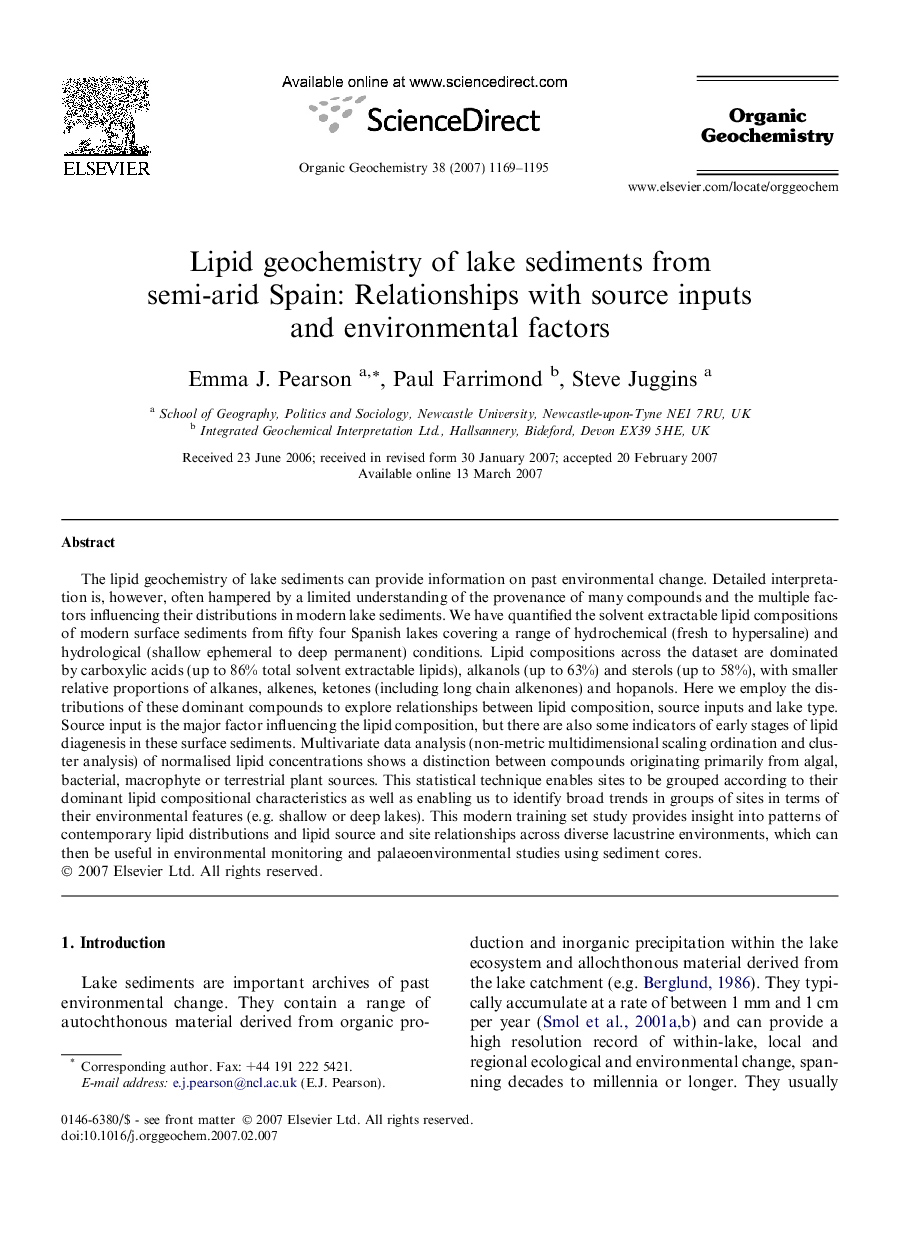| کد مقاله | کد نشریه | سال انتشار | مقاله انگلیسی | نسخه تمام متن |
|---|---|---|---|---|
| 5163632 | 1379915 | 2007 | 27 صفحه PDF | دانلود رایگان |
عنوان انگلیسی مقاله ISI
Lipid geochemistry of lake sediments from semi-arid Spain: Relationships with source inputs and environmental factors
دانلود مقاله + سفارش ترجمه
دانلود مقاله ISI انگلیسی
رایگان برای ایرانیان
موضوعات مرتبط
مهندسی و علوم پایه
شیمی
شیمی آلی
پیش نمایش صفحه اول مقاله

چکیده انگلیسی
The lipid geochemistry of lake sediments can provide information on past environmental change. Detailed interpretation is, however, often hampered by a limited understanding of the provenance of many compounds and the multiple factors influencing their distributions in modern lake sediments. We have quantified the solvent extractable lipid compositions of modern surface sediments from fifty four Spanish lakes covering a range of hydrochemical (fresh to hypersaline) and hydrological (shallow ephemeral to deep permanent) conditions. Lipid compositions across the dataset are dominated by carboxylic acids (up to 86% total solvent extractable lipids), alkanols (up to 63%) and sterols (up to 58%), with smaller relative proportions of alkanes, alkenes, ketones (including long chain alkenones) and hopanols. Here we employ the distributions of these dominant compounds to explore relationships between lipid composition, source inputs and lake type. Source input is the major factor influencing the lipid composition, but there are also some indicators of early stages of lipid diagenesis in these surface sediments. Multivariate data analysis (non-metric multidimensional scaling ordination and cluster analysis) of normalised lipid concentrations shows a distinction between compounds originating primarily from algal, bacterial, macrophyte or terrestrial plant sources. This statistical technique enables sites to be grouped according to their dominant lipid compositional characteristics as well as enabling us to identify broad trends in groups of sites in terms of their environmental features (e.g. shallow or deep lakes). This modern training set study provides insight into patterns of contemporary lipid distributions and lipid source and site relationships across diverse lacustrine environments, which can then be useful in environmental monitoring and palaeoenvironmental studies using sediment cores.
ناشر
Database: Elsevier - ScienceDirect (ساینس دایرکت)
Journal: Organic Geochemistry - Volume 38, Issue 7, July 2007, Pages 1169-1195
Journal: Organic Geochemistry - Volume 38, Issue 7, July 2007, Pages 1169-1195
نویسندگان
Emma J. Pearson, Paul Farrimond, Steve Juggins,